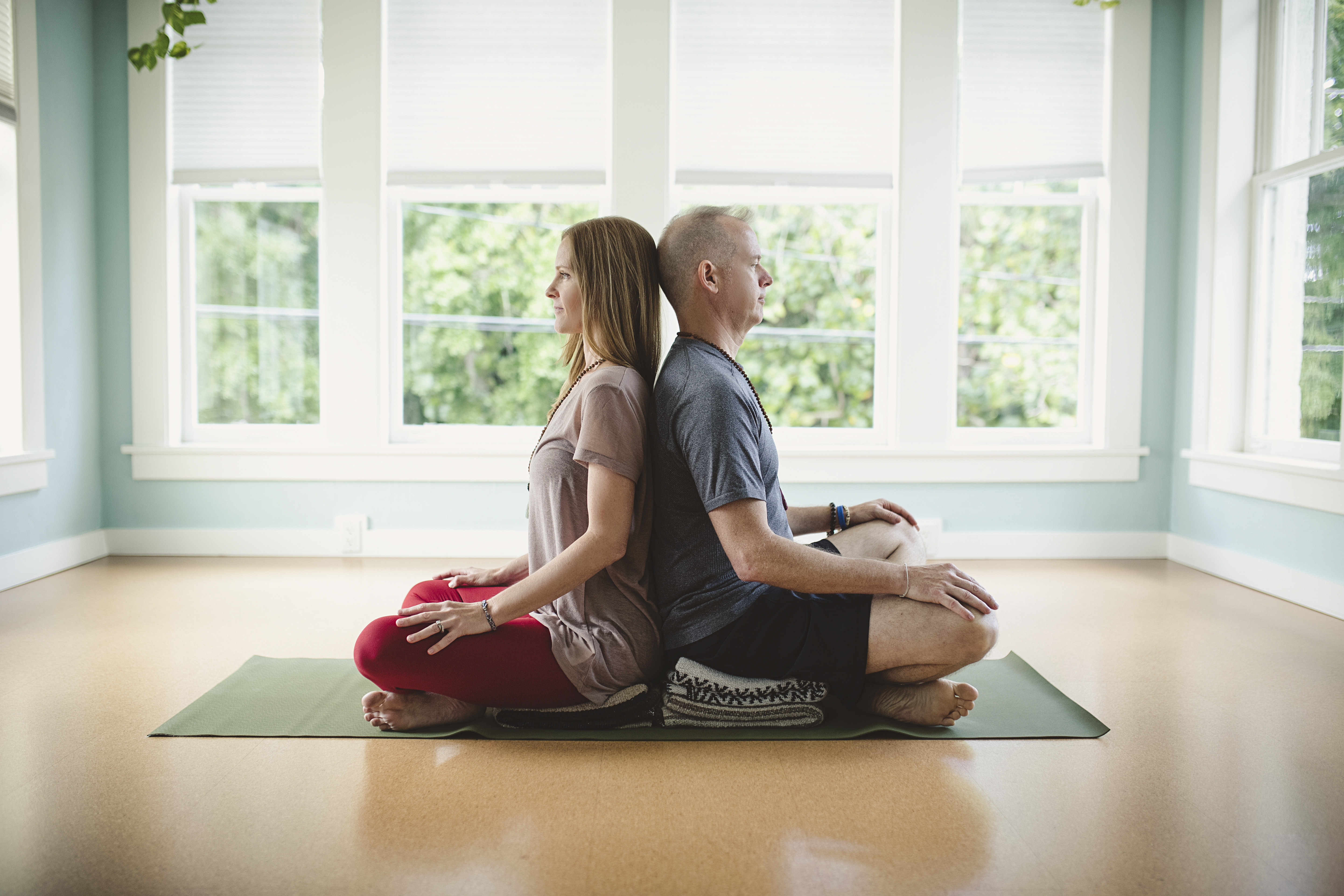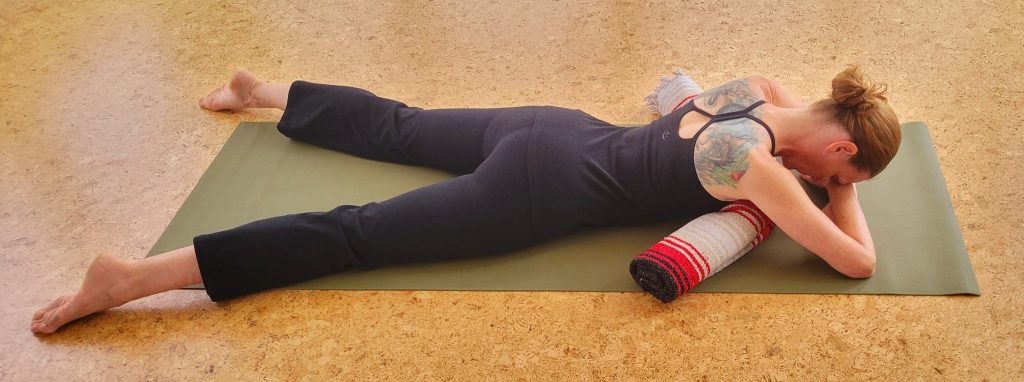
By Jennifer French
(Inspired by the teachings of the Himalayan Institute)
In the yoga tradition and its practice, we can work with the breath in many ways. These techniques are called pranayama—a combination of the words prana (life force or energy) and yama (to direct or control). Practices like Nadi Shodhana (Alternate Nostril Breathing), Ujjayi (Victorious Breath), and Sitali (Cooling Breath) offer all kinds of wonderful benefits. However, before we start changing or controlling the breath, it’s important to first learn how to breathe in a way that is healthy and natural—free from unnecessary tension or effort.
Healthy Breathing: The Foundation
Healthy breathing is the starting point for all breathwork. It’s the simple act of breathing without strain, allowing the breath to flow freely and easily. This is a bit different from the natural, unnoticed breath that we rely on throughout the day. The breath we’re focusing on here is one that we pay attention to and consciously cultivate. This type of breath embodies five key qualities: smoothness, depth, evenness, continuous movement, and quietness.
1. Smoothness: A smooth breath flows effortlessly. There are no snags, breaks, or tension. It’s steady and unhurried, much like a calm stream of water.
2. Depth: A deep breath engages the diaphragm, the muscle at the base of the ribcage. Instead of shallow, chest-based breathing, a deep breath allows the belly to rise and fall naturally, creating space in the body with each inhale and exhale.
3. Evenness: Healthy breathing is balanced. The inhale and exhale are of equal length and quality—neither too long nor too short. Both phases feel steady, creating a sense of rhythm in the body.
4. Continuous Movement: A healthy breath doesn’t pause between the inhale and exhale. The breath flows smoothly, one phase merging into the next, without interruption. This continuous flow helps to calm the nervous system and promote relaxation.
5. Quietness: Quiet breathing is soft, gentle, and often silent. There’s no force or noise in the breath. It reflects an inner stillness, offering a moment of calm in the body and mind.
Practices to Cultivate Healthy Breathing
There are a couple of simple practices you can do to help develop a natural, healthy breath. These exercises will help you tune into the breath and build a foundation for the deeper practices explored in pranayama.
1. Makarasana (Crocodile Pose)
Makarasana is a restorative, belly-down pose that encourages the diaphragm to move freely and rhythmically. Practicing this pose regularly (3–4 times a week for 3–5 minutes) helps you become more aware of how the breath moves through your body.

- How to Practice:
- Lie on your stomach, with or without blanket support.
- Cross your arms and rest your forehead on your forearms, holding opposite elbows.
- Place your feet wider than hip-width apart, keeping them neutral and fully relaxed.
- Relax and notice how the breath moves through your abdomen, sides, back, pelvis, and pelvic floor.
- While in Makarasana, explore the five qualities of healthy breathing. See if you can cultivate a deeper connection to each quality: Is your breath smooth, deep, even, continuous, and quiet?
2. Sandbag Breathing
Sandbag Breathing strengthens the diaphragm and deepens your connection to the breath. By placing a sandbag on the abdomen, you create gentle resistance, encouraging the breath to become fuller and more engaged.

- How to Practice:
-
- Lie on your back in Savasana (Corpse Pose).
- Spend 1–2 minutes observing your breath, noticing the five qualities of healthy breathing.
- Place a sandbag on your abdomen, just below the ribcage and above the hips. Feel the gentle resistance as you breathe.
- Continue for 3–5 minutes, keeping your focus on the breath.
- After removing the sandbag, take a moment to notice how your breath feels compared to before. Are there any changes in the five qualities?
Starting with Healthy Breathing
Focusing on healthy, effortless breathing is the foundation of pranayama. When we breathe freely, without strain or tension, we open ourselves to the natural flow of energy and life force. As you continue developing your healthy breath, you’ll notice your awareness deepening, creating space for more focused and controlled pranayama practices.
It’s important to remember, however, that this healthy breathing is different from the natural, unnoticed breath we rely on throughout the day. The breath we’re cultivating here requires mindfulness and conscious attention. Don’t expect your breath to embody all of these qualities all the time—it’s a practice, not perfection. If your breath feels rushed or uneven, don’t worry. Gently return to a simple awareness of your breath’s movement, and let it flow with ease. Before we dive into the advanced techniques of pranayama, let’s return to the basics: simply breathe—smoothly, deeply, evenly, continuously, and quietly. This is where the practice begins.
